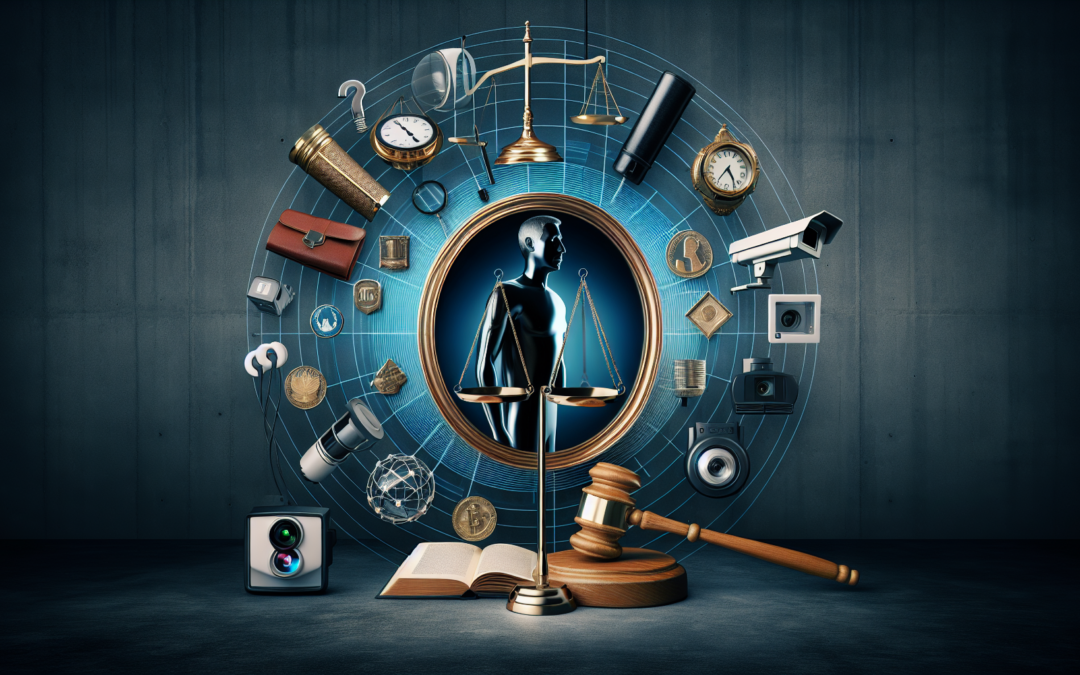A Digital Dilemma: Brookhaven Town Hall Incident Through Law Enforcement Eyes
In the shadows of an increasingly digital society, law enforcement finds itself navigating uncharted waters, where the omnipresent eye of technology challenges the traditional constructs of justice. The recent incident at Brookhaven Town Hall is emblematic of this paradigm shift, presenting a tangled web of truths and half-truths, as self-recorded footage suddenly positions itself as both judge and jury. With technology on one hand acting as a sentinel of security, and on the other, a catalyst for mischief, how does one traverse this delicate balance?
The Digital Witness
Law enforcement officials have seen technology evolve from Polaroid cameras to sophisticated forensic software, yet the emergence of self-recorded content as a primary witness is a double-edged sword. When Lia allegedly documented her own crime, perhaps unknowingly, it thrust law enforcement into a realm where the notion of evidence transformed in an instant. Here, truth and manipulation intertwine through the lens of a smartphone or the continuous orbit of a surveillance camera, leaving detectives grappling with an incendiary mix of reliability and deception.
The police in this incident were faced with an irrefutable artifact—the suspect’s purported self-recording. What once tied investigators to the painstaking search for clues and eyewitness testimony now offers instantaneous access to prima facie evidence, demanding a recalibrated approach from those sworn to uphold justice. The challenge is to discern authenticity, and ensure technology aids, rather than obstructs, the righteous path.
Justice on Trial
The courtroom has traditionally been a space of order, where fact and opinion are segregated meticulously to deliver justice. Yet, as digital waveforms now carry evidence embedded in pixels and sound bites, the essence of truth comes under speculative fire. Law enforcement finds itself on trial—not merely for their actions, but for the very fact-finding process itself, now scrutinized by the eyes of a technologically-savvy public.
How does one distinguish between real-time justice and trial by media? It is essential that law enforcement officers not merely react to evolving social dynamics but lead the charge in adapting and defining ethical boundaries. The significance of this lies not just in a single case’s verdict, but as a guiding precedent for the thousands of similar legal battles sure to arise in the forthcoming digital reality.
Trust and Verification
With each digital case set before them, law enforcement professionals face not just the task of investigating the crime, but engendering public trust in their methods and judgments. The Brookhaven incident presents an opportunity—or perhaps a necessary obligation—for officers to engage with the community, ensuring transparency, as well as fostering an understanding of how digital evidence is handled, verified, and applied.
Central to this endeavor is creating robust “trust auxiliary networks” within technologies. These include adopting defined verification systems and protocols that people can count on to responsibly evaluate technological evidence while preserving the human element in judicial proceedings. Only when the scrutiny of technology is balanced with due process does confidence in law enforcement remain unshakably grounded.
A Human Element in Digital Times
Technology may be advancing at captivating speeds, yet it cannot replicate the emotion, insight, or empathy that marks a human-centered approach. The officer on the ground or the detective on the case must remain steadfast in relating to individuals not solely as data points but as human stories intricately woven by narratives of struggle, redemption, and empowerment.
In dealing with technology-imbued cases, they must articulate the tenets of constitutional rights, ensuring technology remains an adjunct rather than an antecedent to personhood. Each case, including Brookhaven’s digital conundrum, aids in sculpting future strategies clearly defined by accountability not just to gadgets or software, but to justice as lived and perceived by the people it affects.
Bridging the Divide
As these digital engagements continue to redefine the public-to-police relationship, platforms like “The John Ligato Show” offer an indispensable dialogue facilitating transparency. Here, community perceptions are given a forum, allowing law enforcement to align strategies and philosophies with societal demands. By integrating trusted programs like John Ligato’s into mainstream awareness—Subscribe Here and Watch the Episode—the bridge grows ever stronger; an essential pathway guiding mindful practice and receptive engagement.
Conversing candidly about such matters turns contentious incidents into catalysts for collective growth, unifying diverse voices in a chorus for justice unfettered by distrust.
The Next Frontier
What transpires at legislation tables and discussions throughout police precincts will craft the fabric of the law enforcement ethos for years to come. These debates consider expanding on measures that work symbiotically with technological advancements without sacrificing core values vital to maintaining civilization’s imperatives of justice and fairness.
The Brookhaven incident, seen through law enforcement’s keen perspective, enlightens a society grappling with a tech-driven fate. Only by combining integrity with innovation can guardians of peace and order remain as relevant and resolute as those designated to protect. Engage with more impactful discussions by connecting with The John Ligato Show on Facebook.
It’s more pressing and relevant than ever that we stand with some in favor of prudent technological assimilation, amidst a conversation that demands new rules be written, not just in code, but in conscience. We can glide effortlessly into a digital age, or choose instead to march purposefully—guardians anew upon uncharted yet familiar terrain.

Recent Comments